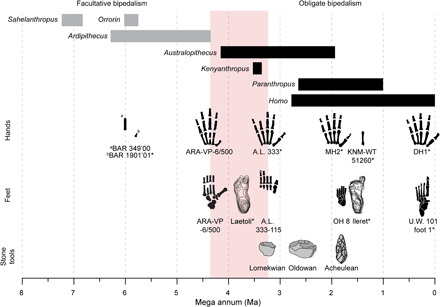Fig. 7. The evolution of hominin hands and feet reflects an evolutionary shift toward enhanced manipulative capabilities and obligate bipedalism, respectively.

Partial hands, partial feet, and stone tool exemplars are depicted here and supplemented by reference to more fragmentary specimens preserving functionally relevant anatomies. Gray bars, facultative bipedalism; black bars, obligate bipedalism; red bar, approximate timing of hypothesized hominin evolutionary shift. Asterisks indicate that the fossil was mirrored. BAR 349’00, curved juvenile manual proximal phalanx of Orrorin tugenensis; BAR 1901’01, pollical distal phalanx of O. tugenensis with extrinsic flexor insertion; OH 8, foot attributed to Homo habilis; KNM-WT 51260, MC3 with styloid process probably representing Homo erectus; U.W. 101 (foot 1), partial foot of H. naledi.
